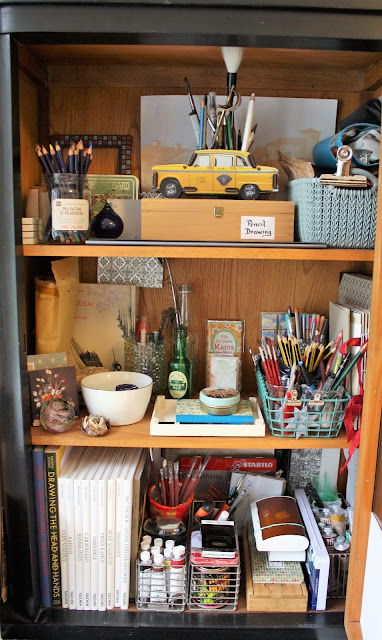The Pastel Plant?
When I think of the term pastel I don't think of a plant, yet that is what it actually is, a slightly weedy specimen with foamy yellow flowers belonging to the mustard family, which although native to the caucases, grows wild in central and southern Europe as well as parts of Great Britian. In English Isatis tinctoria is called Woad. It is the source of a dark blue dye which is extracted by simply filtering an infusion of the leaves.
The color itself contains the same chemical elements as Indigo, a pigment later brought from India, only in smaller concentrations. A very ancient coloring agent, it has been found in many archeological sites from Egypt to Hallstatt. In the Middle ages this dye was extremely valuable being one of the three primary dyes available within Europe (the others being a red and a yellow). It was used by both the Romans and the celts and is what made the area of Toulouse, Abri, and Carcasonne immensely wealthy. The beautiful archiecture of the city of Toulouse, for example, is the direct result of its trade in pastel, or woad. These three cities are still sometimes refered to as being the Pastel Cities.
Yesterday I recieved a fascinating present from a friend (from Toulouse). A bottle of this Pastel ink. One of the children also recieved a box of pastels. It is always fun to recieve and try out new art supplies and I immediatly read the little paper tucked into the box giving a brief history of the region and product. The few paragraphs were enough to peak my interest. It has been supprizingly difficult to find much information about it online...
The term pastel has always brought to mind those chalky, smeary little sticks that are so messy but so fun, all the while setting your teeth just slightly on edge while using them. I recently treated myself to a small set of oil pastels from Sennelier which unlike their cheaper cousins are so smooth it is like drawing with butter. They are wonderful to work with although they never truely set. Or perhaps I never fix them quite right. However, oil pastels are actually a elatively modern (re-) invention using pastel ink, rather than the other way around, as I had expected. In the 1920s, Sakura Art Supplies in Japan came out with a pastel stick which applied the principle of mixing the pigments with a soft wax and forming in into sticks for easier use. While these were considered to be a children's art tool they became more popular amoung artists themselves because could be used on a variety of different backgrounds. The true oil pastel, as we know it today, is credited to the Sennelier workshop in Paris in 1949. It is a twist on Sakura's idea, but uses oil to meet a need expressed by both of Picasso and Goetz. A substrate to use in underpaintings and with other oil based paints as well as a lasting medium for use on a wide variety of backgrounds. Although Henri Sennelier came up with a wide palette of colors (about 120) the original 'pastels', made of the pastel plant are available in shades and tones of blue, they range from gray blues through blue to an almost black hue. One important variant is the binder used. Thu, the oil pastels produced in the toulouse region are blue.
A last fun fact before calling it a night: The pastel dye was not only used as a clothes dye, it was also used to paint 'tatoos' onto both Celts and Romans. At least that is what I read while researching a bit online, and given the everything on the internet is enerringly true, it cannot be wrong.
Of course I tested it out:)
To get posts as soon as they are published click on the subscribe button at the top of the page or Follow by clicking on the follow button.
















Comments
Post a Comment